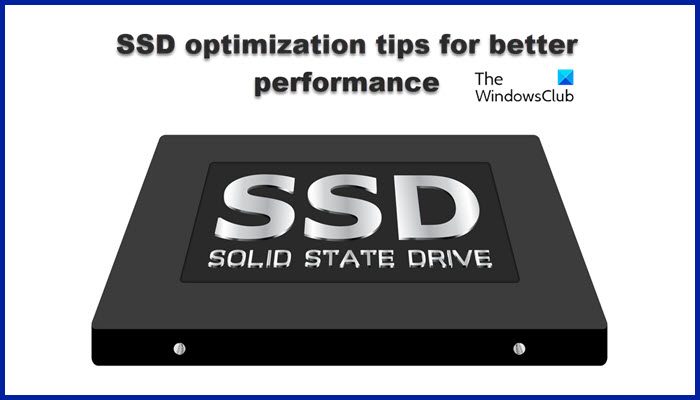Best SSD Optimization Tips for better performance
Following are the SSD optimization tips for better performance on your Windows 11/10 computer: Let us talk about them in detail.
1] Make sure to get the right device
You can not just get a random SSD and call it a day. Every device has some specification and you need to make sure that you are getting the right one. If you are on a desktop computer and are planning to get a SATA SSD, the first thing worth checking is the availability of slots or cables to plug the device in. Lack of space can force you to bug a Y-split cable, which is not a bad option, to plug in the drive. Apart from this, there are different variables, so, if an option is debatable, try consulting an expert.
2] Disable Fast Startup
SSDs are known for reducing the time required in the booting process and Fast Startup is meant to do the same. However, Fast Startup on top of SSD’s fast booting speed, doesn’t make a lot of difference. So, it would be better to just disable the Fast Startup and allow your system to boot properly. Follow the given steps to disable Fast Startup. This will optimize your SSD.
3] Turn on TRIM
TRIM is a feature that signals the SSD which blocks of data are no longer in use and can be safely wiped out to be writable again. This helps to improve SSD’s performance and should be enabled on your system. Windows tend to keep it enabled by default, but we are still going to check if the feature is working. To do that, open Command Prompt and run the following command. If you see Disabled, then TRIM is enabled. I know it’s counterintuitive, but do read the command.
4] Update SSD Firmware and Driver
Next up, try updating SSD Firmware that comes with your drive and try updating your device driver. The firmware can be downloaded from the manufacturer’s website, the device driver can be downloaded from any of the following methods.
Download Driver and Optional Updates from Settings.Go to the manufacturer’s website and download your driver.
This will make sure that you are always up-to-date.
5] Enable AHCI
AHCI is an abbreviation of Advanced Host Controller Interface (AHCI), it specifies the operation of Serial ATA (SATA) host controllers in a non-implementation-specific manner in its motherboard chipsets. You need to enable the AHCI from BIOS and optimize your experience even further.
6] Optimize SSD using Crucial Storage Executive
Crucial Storage Executive is software that will help you in optimizing SSD. It is a firmware that will take care of your Solid State Drive by updating its firmware, driver, and other things. So, go ahead and download Crucial Storage Executive for free.
7] Manage Write Caching
Write Caching is one of the most controversial features. On some systems, it makes the experience better, whereas, on some, it deteriorates the SSD’s performance. What we would suggest is to try to disable Write Caching and if you see a dip in SSD’s performance, turn it back on.
8] Use High Performance Power Plan
Finally, we would ask you to High Performance Power Plan. This mode works great with SSD, however, it can take a bit of a toll on your battery. So, it’s a bit of a tradeoff, but if you agree, follow the prescribed steps to switch to High Performance Power Plan. Close Control Panel, restart your computer and your SSD will be optimized. Read: Things you must do when running an SSD in Windows 11.
Is optimization good for SSD?
Yes, optimization is good for everything. However, you need to make sure that you are not over-optimizing things, also, a lot of users tend to do redundant things when trying to optimize their device. So, if you want to optimize your SSD, make sure to just execute the tips mentioned in this guide. Read: Do you need to defrag SSD?
Does higher SSD increase performance?
Yes, SSDs will increase the performance of your system. They will not only have a faster read and write speed but will only quicken the booting process. So, if you are in a market looking for something to improve your system, SSD should be right on top of your list. That’s it! Also Read: Fix Slow SSD Read or Write Speed on Windows PC.

